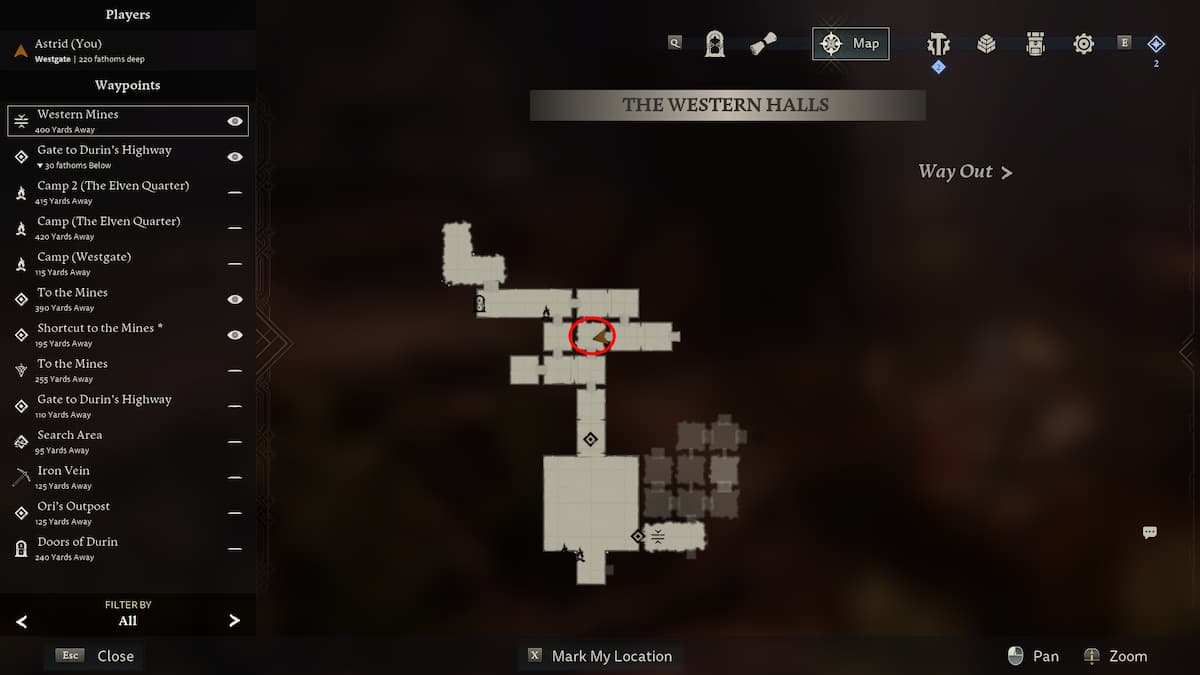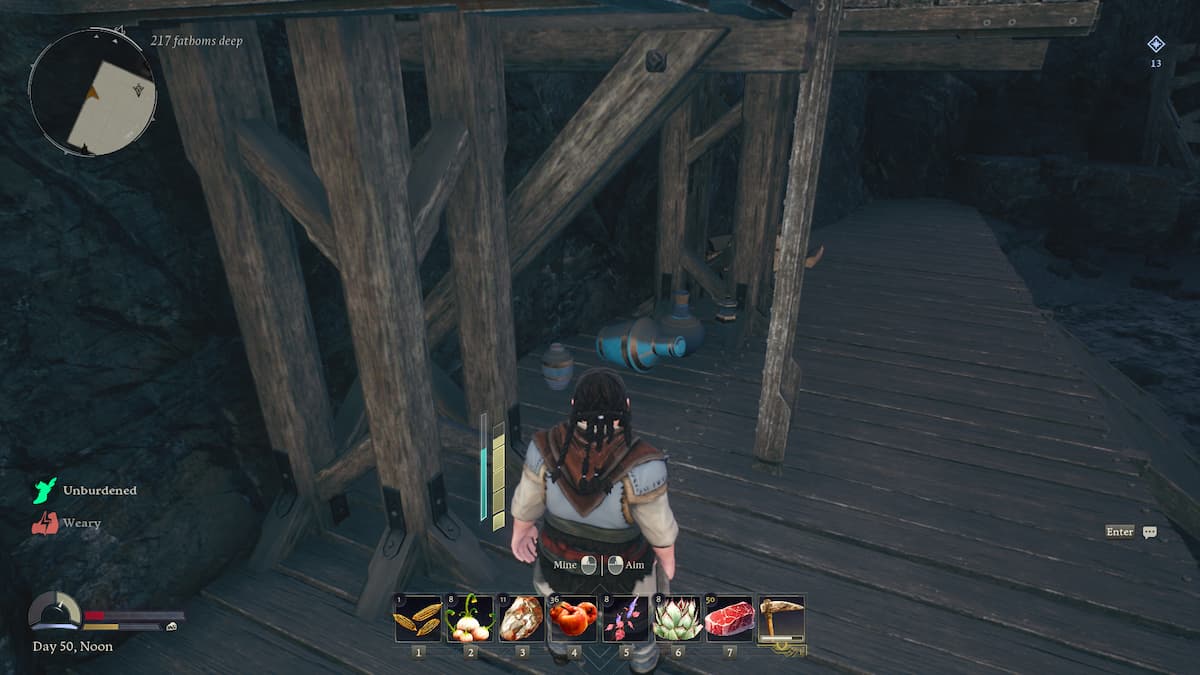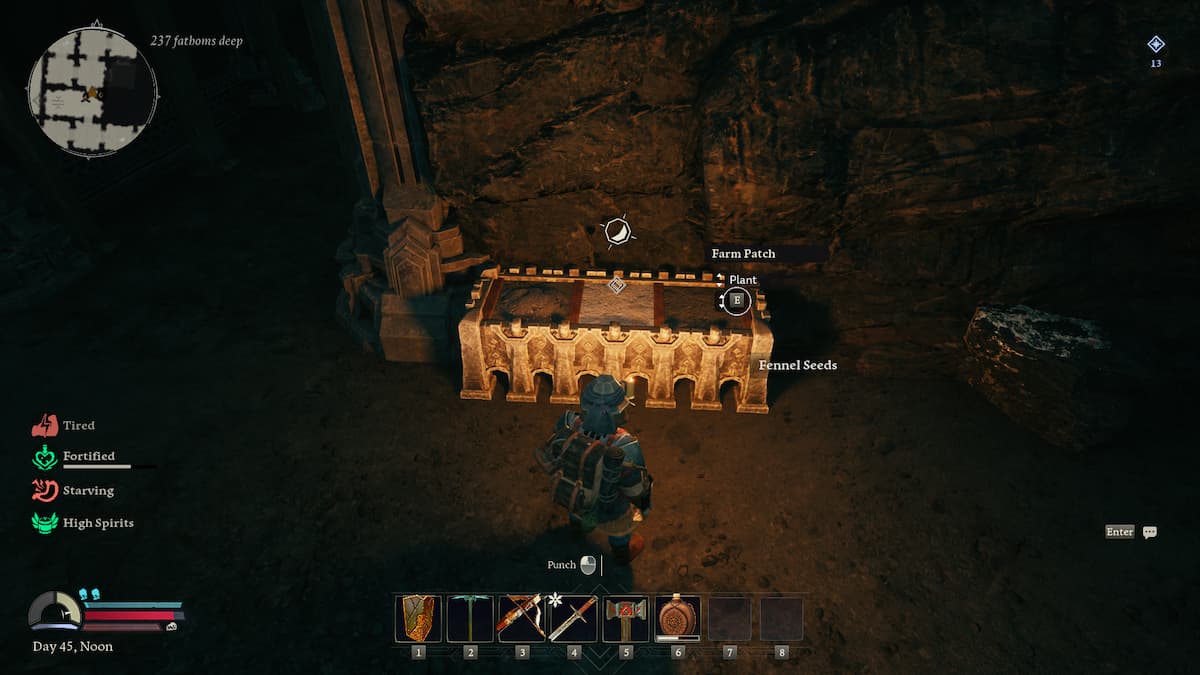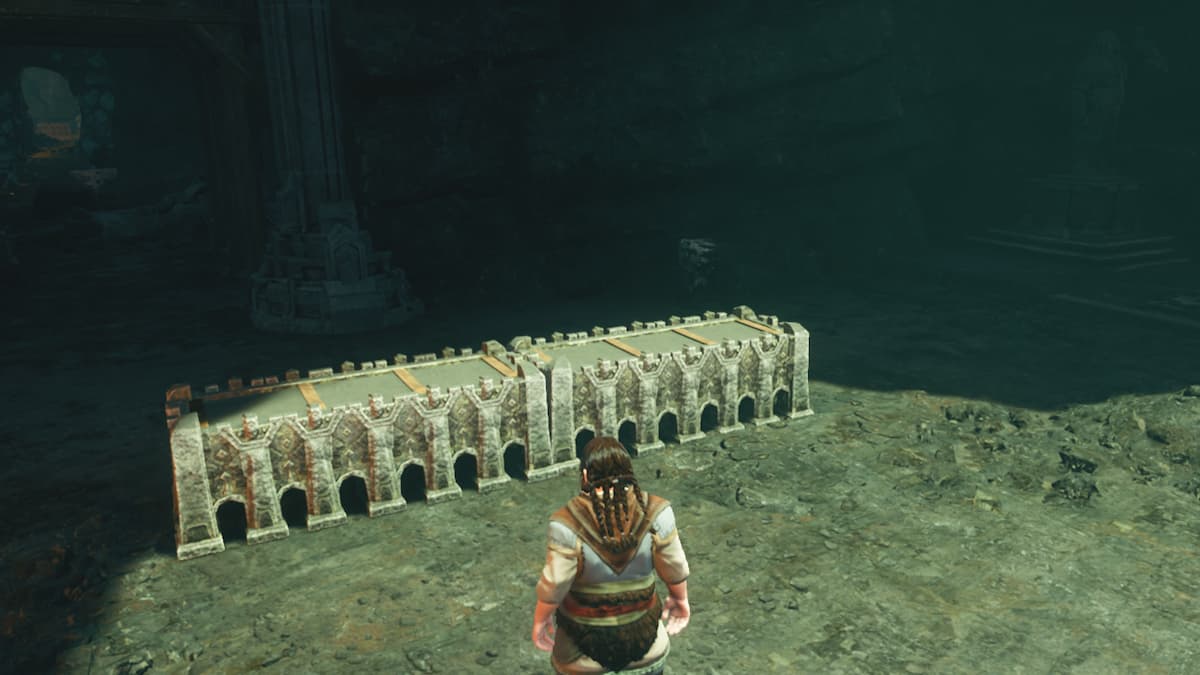From finding seeds to growing plants for recipes, farming is an easy way to ensure you never starve, always have ale, and can heal yourself. Here’s the full breakdown of how to farm, including unlocking farm patches, in Lord of the Rings Return to Moria.
Complete Farming Guide for LotR Return to Moria
How to Unlock Farm Plots
You won’t be able to unlock farming near your camp until later in the game when you start heading down to the Lower Deeps. The two different plans are learned when you kill a bat and pick up bat droppings. The Farm Patch allows you to grow on resources, while the box has space for three.
- Farm Patch:
- Ihraz Granite x3
- Bat Droppings x2
- Farm Box:
- Ihraz Granite
- Bat Droppings x6
If you don’t want to wait to start growing things, there are a few spots you can go to that already have farming areas set up. One is along the descent from the Elven Quarter down to the mines outside the ruined house. The other is in the Western Halls, where you can gather many seeds and cranberries. I started growing seeds in this location since there’s sunlight, which unlocked new recipes for me. Before I left the area, I went and harvested my last batch of plantings and took them with me to the mines.

How to Get Seeds
Seeds are often found hiding in various vases and jars in ruined Dwarven houses in the Western Halls area. This is the first section of Moria that you explore in the game. There are some in the first section of the mines, including the descent down and near Bolin’s abandoned camp. When they’re on the ground, seeds appear in white bags, making them stand out pretty well.
All Seeds
- Chive
- Fennel
- Mint
- Thyme
- White Bean

How to Plant Seeds
Standing next to the farm patch or box will bring up the available seeds and plants you have in your inventory. Scroll to the one you want and select it. Simple as that. The main thing you want to pay attention to is the amount of sunlight the plant needs. Mushrooms will only grow in partial to no light, signified by the quarter moon that shows up on the left of the planting menu.
If you sow the wrong thing in the wrong box, you do have the ability to take it out. Hover over the spot with the incorrect planting, and the option to “Uproot” will show. You still want to be careful since this destroys the planted resource in the process.

Full Sunlight Plants
- Aule Bloom
- Cabbage
- Sunion
- Mountain Potato
- Khudzul Oat
- All Seeds
Partial or No Sun Plants
- Mushroom
- Deep Mushroom
- Poison Mushroom
- Biteweed
*These lists are works in progress, as not every nook and cranny of Moria has been explored. If more plants are discovered, these will be updated.
How to Harvest Plants
Plants grow within a one-day cycle, similar to growing in the wild. However, you want to wait a full four days to get the most out of your farm. Each day, they grow another unit, maxing out at four. If you only have one Fennel Seed, you’ll end up with four Fennel at the end. Take one of them and plant it, waiting four days again to harvest the maximum amount. This is the most efficient way to make sure of limited resources.
That’s all you need to know about farming resources in Lord of the Rings Return to Moria. For other walkthroughs like how to farm resin or how to make lembas bread, delve into our expanding guides hub.







Published: Oct 28, 2023 01:37 pm